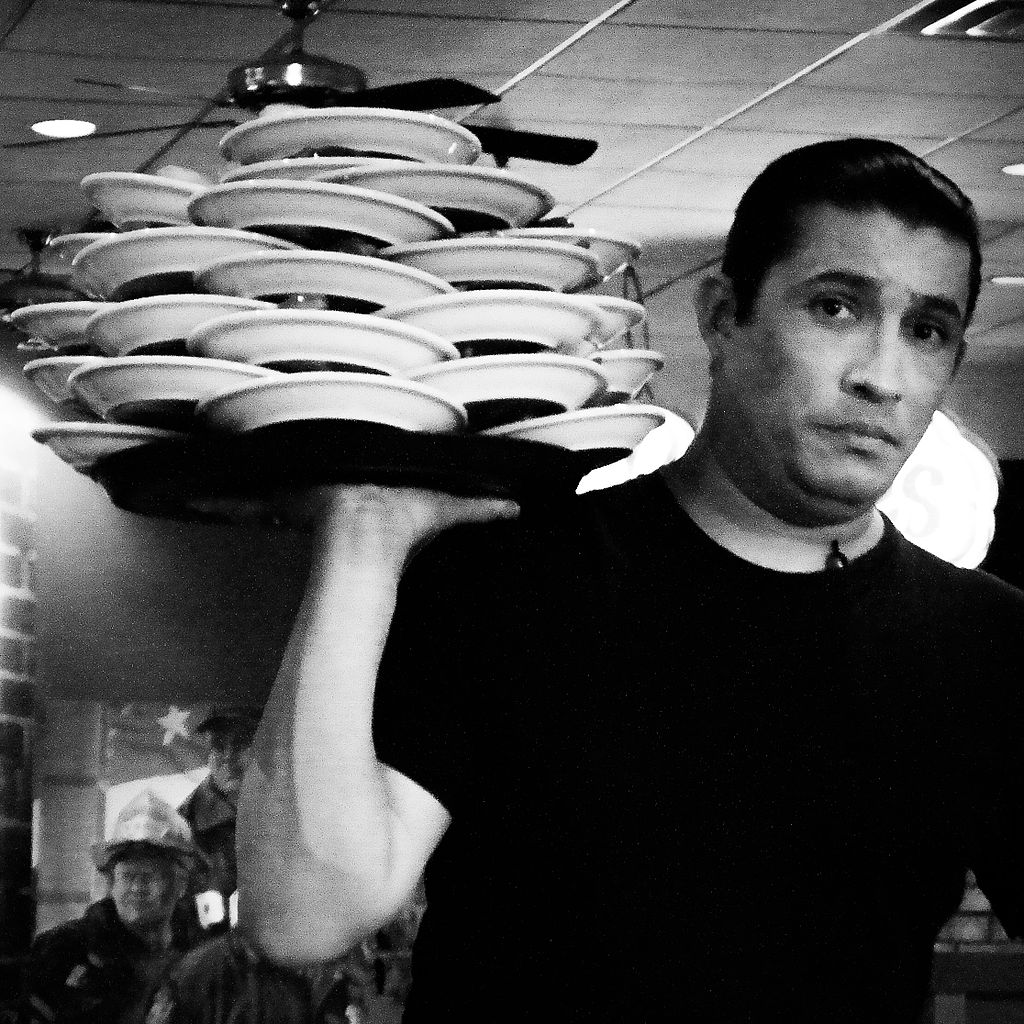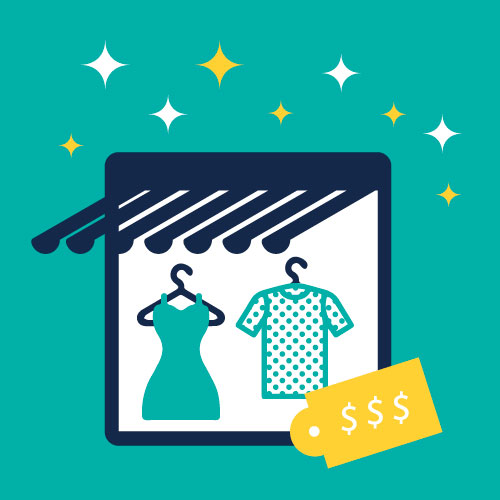With the city’s recent passing of a $15 minimum wage increase, there’s much debate over how it will affect restaurant servers in Seattle, who depend on tips for their livelihood. During the next five years, small businesses with less than 500 employees will be allowed to apply employer-paid health care contributions and consumer-paid tips towards the minimum, but, following that, they’ll need to pay the full $15. While this is undoubtedly a triumph for back of the house staff like dishwashers, it’s more murky for servers. Will diners continue to dole out the standard 15-20% tip for good service, or will they scale back knowing that the server is getting $15 an hour regardless of their performance? There’s also concern from restaurateurs that, given the increase in their payment responsibility, they’ll need to charge more for food, particularly for quality items. Should that happen, will people eat out less, or will they continue to dine out just as frequently but scale back on tips? Back in March, before the legistation passed, we talked to servers and etiquette expert Lizzie Post, great-grandaughter of Emily Post, about the issue. Now we’ve asked our Seattle WeeklyFood Panelists how they’ll tip once servers begin receiving a $15 hourly wage.
The Food Panel Weighs In …
Leslie LaRue Macaroon Lover, Keeper of Chickens
I’ve gone back and forth on where I stand with this debate. For now, I don’t feel comfortable adapting a one-size-fits-all approach. So, I’ll ask myself this question after dining out: Is the server providing the same great service, or are they adapting an attitude of, ‘Hey, I make $15/hour, it doesn’t really matter how I treat you, as a customer.’ Having been a server myself, I can understand why many in the industry are against the wage increase. Most customers will likely tip less. But I’d hate to see the field of fine dining, and the art of being a truly amazing server become a thing of the past. So, I’ll do my part to treat each experience as its own, and evaluate how much, or how little, I tip each time I eat out.
Kuo-Yu LiangWriter, The Hungry Traveler
I have no plans to change how I tip at restaurants or bars with the minimum wage hike in Seattle. This is because I never considered tipping in restaurants as a subsidy to low wages, just like I wouldn’t tip a ticket seller at a movie theater, or other low-wage earners. I see tipping as a way to gain better service, especially if I plan to return to that restaurant often. I find that as a good tipper, I get more above & beyond treatment such as personal greetings, an occasional free dessert and help problem solving, such as adding a person to a table.
Tomoko Kassandra YuzawaBeauty coordinator, A passion for exploring new & authentic dishes
As with most people, I think I have a pretty standard love/hate relationship with tipping. On one hand, if the service is great, it should definitely be rewarded! On the other hand, if the service is basic (meaning I could do it myself but I 1. Don’t own a $600 espresso machine or 2. Didn’t have time to make my own ice cream) and/or terrible, then I’m more hesitant to do so. When I do tip, however, I tend to tip at least 20%. That said, knowing that the person who is taking my order and bringing me my food is making $15 an hour is the last thing on my mind. What is most important to me is how they treat me as a customer and how my experience was. At the end of the day, isn’t that the whole reason you go out to eat in the first place? If the service and experience was amazing, you bet I’m going to tip! If it wasn’t? Well, note to self, don’t go there again.
Austin Dienst Board Member of the Market Foundation
After taking some time to better understand the impact of the $15 minimum wage increase, I am confident that it will not affect my tipping practices in the least. Good service is worth paying for and I plan to continue to tip at least 20% for it. Now, that said, I do think that the minimum wage increase will affect my dining habits. Prices at restaurants are going to increase because the cost of labor across the board is going to increase: delivery people, dishwashers, bussers, and all of the other folks who make running a restaurant possible. There is already an abundance of overpriced, mediocre food in Seattle and when the new minimum wage pushes those prices even higher, I’m going to spend more time at home cooking. It probably won’t affect my high-end dining habit, but I’m definitely going to start bringing my lunch to work.
Sheri WetherellCo-Founder and CEO of Foodista.com
When you’ve worked in the food service industry, you know how hard it is physically and financially. For good service I always tip 20% or more and that won’t change if a worker is making $15/hr. Bottom line: $15/hr finally puts workers above the living wage, so why would I penalize them by short-changing them on their tips? If restaurants impose a 5% service fee, I’ll factor that in based on quality of service (the great ones will get 25%!), but again, the worker shouldn’t suffer from it. This is an opportunity for everyone to work hard and make more. In the long run this change, I believe, will ultimately be a win-win for workers and businesses.
Kathleen FlinnNYT best-selling author, fearless cook
I surveyed about a dozen people and, as expected, results were all over the map. Tipping is a thorny, subjective and highly personalized matter. I spent much of a decade of my life working as a server in various capacities, from breakfast counters to fine dining. This dates me, but back then I earned about $2.50 an hour when the minimum wage hovered in the $3.75 to $5 range; the tips were meant to bring our wages up to par with those making at or above minimum wage. I had people leave $10 on a $15 tab at breakfast, and others leave $10 on a $100 check at a fancy joint. Given that history, here’s my take: My husband and I consider 20% a standard tip. We’ve certainly tipped higher. Having been a server, I know that an extra dollar or two doesn’t mean as much to me as a diner as it does to a server. However, if I’m at a restaurant in which I know servers are making $15 an hour, I’ll probably go with a 15% tip. Rather than a 5% surcharge to offset the costs, I’d prefer a restaurant to simply raise their prices by the same amount. So a $10 burger is $11. I’m OK with that. Menu prices in the United States seem low, but it’s artifice; once you’ve factored in sales tax (about 10%) or tip (15% to 22%), the prices are about two-thirds of the actual costs. This differs from other countries where I’ve lived, notably the United Kingdom and France. Gratuity was included in all bills; if you wanted to leave a bit more as an expression of good service, you had the option. Both countries have national health insurance, so the matter of coverage isn’t tied to employment as it is in the United States. Personally, I’d love to just see servers (and back of the house workers) all paid a decent wage with regard to their positions and eliminate tipping altogether. But I know that’s not going to happen anytime soon.
If you would like to become a member of the Food Panel, email me at nsprinkle@seattleweekly.com and tell me why we should care what you think. Or you can join the conversation via the Disqus comment section below. I’d love to hear what you have to say too! And feel free to suggest a topic you think bears talking about and we’ll consider it for a future panel.





